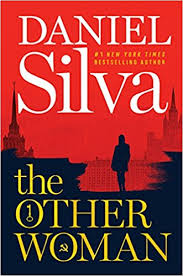Calculating the True Value of Library Labor | Peer to Peer Review
Economic measurements almost always exclusively focus on the materials offered by libraries. But what about all the intangible services that library workers provide, such as children’s story hour, makerspace trainings, ESOL, citizenship preparation, job search help, and on-demand reference consultations? How might we communicate the value of all of the other services libraries provide beyond materials?
 |
Receipts from the Wichita library now show the cost savings of borrowing materials instead of buying themImage by Suzanne Perez Tobias for the Wichita Eag |
Libraries are regularly under pressure to defend and justify their existence to various entities, including administrators, policy makers, legislators, and community members. In 2020, more than 100 referenda to support U.S. public libraries appeared on ballots across 27 states. Such situations force libraries and librarians to develop new strategies for advocacy that demonstrate relevance and communicate value to secure ongoing funding and other support. As researchers, we’ve noticed one predominant tactic is to develop quantifiable measures that link libraries to social and economic prosperity, such as return-on-investment measures, or demonstrating the cost saving of borrowing instead of buying, communicated through documentation such as receipts that show the retail cost of books and other library materials.
Another popular example is the Library Value Calculator, originally developed by the Massachusetts Library Association and now available from the American Library Association. It is an online form that allows users to input the number of various items borrowed (books, CDs, etc.) and programs attended to estimate the cost of a visit to the library.
Looking at these and other examples, we noticed a trend—these economic measurements almost always exclusively focus on the materials offered by libraries. But what about all the intangible services that library workers provide, such as children’s story hour, makerspace trainings, ESOL, citizenship preparation, job search help, and on-demand reference consultations? How might we communicate the value of all of the other services libraries provide beyond materials?
CRITICAL DESIGN AND INVISIBLE LABOR
To explore this idea, we drew on the idea of critical design, a specific form of activist research inquiry that uses the creation of provocative artifacts to challenge established assumptions, shift perspectives, and spur people to think in new ways. Critical design is characterized by using design products to call into question how the world currently is and provoke thought into how it could and should be.
Looking through a critical design lens at all of the labor that was not included in traditional library valuations led us to focus on the idea of invisible labor: work that frequently receives little or no recognition or monetary reward. The concept emerged from feminist scholarship in the 1980s to bring attention to underpaid, unrecognized, and undervalued work, often performed by women, such as household work. Intellectual work—of which much professional library work consists—often remains unseen and therefore unrecognized, placing it under the umbrella of invisible labor. In fact, the higher the quality of the work, the less visible it becomes to those who benefit from it. To that end, many professional library services that are labor-intense and done well remain invisible.
We wanted to surface and make clearly visible all of this typically invisible library work, to show patrons, funders, and other stakeholders that libraries are more than just materials. To do this, we decided to take the Library Value Calculator and flip the algorithm on its head by building a revised calculator that included these tasks. As a part of critical design, we wanted to make the relationship of our product clearly linked to the Library Value Calculator to capitalize on its familiarity and ease of use. We decided the best way to do this was to use the original material calculations and to add the cost of labor, so that the results would remain in a format familiar to the public and other intended audiences of the original calculator.
HOW DO WE CALCULATE LABOR VALUES?
In order to determine the added cost of library labor, we needed to gather a lot of data. We decided to create a survey for nationwide distribution, including all library workers in day-to-day responsibilities. This was no run-of-the-mill survey, however! We decided to dig past job titles and professional qualifications and investigate how any given worker’s day was divided into different tasks. First, we had to lay out all the possible kinds of tasks involved in library work, which was no small feat given the various roles and tasks undertaken by library workers: programming, checking out items, cataloguing, locking down the building, managing employees, and negotiating vendor contracts, just to start! We came up with 13 broad categories, including administration, outreach, programming, and technical services. We asked participants about salary, how many hours a week they worked, and how those hours broke down into various categories. We also included questions within each task about emotional labor, which is a form of invisible labor required to manage one’s emotions in order to meet organizational expectations, such as needing to smile at patrons even when having a bad day. The goal of the survey was to find out the distribution and value of the invisible labor of library workers.
Just as we prepared to distribute our survey, the pandemic brought the world to a screaming halt. How could we reasonably ask our colleagues to remember the regular days and report on those hourly tasks when they were experiencing lockdowns and furloughs? We returned to the drawing board—remotely—and looked at our options. We decided to expand the survey to ask about pre–COVID-19 work as well as how COVID changed library positions, responsibilities, and the hours spent on tasks. After a thorough overhaul and delay of a few months for IRB re-approval, we released the survey in August 2020. We had it open for four weeks and received responses from all over the United States.
DESIGNING THE TRUE VALUE CALCULATOR
 |
Sample screenshot from the True Value Calculator |
To add the cost of labor to the original calculator, we parsed the data, compiling and averaging salaries and tasks into calculable costs of dollars per hour. We then hired a website designer and sat down to design a brand new calculator, hosted on the Syracuse University iSchool website. Users of the True Value Calculator select tasks based on their own recent experiences with libraries and are presented with a total dollar value that represents the intellectual, invisible, and emotional labor necessary to enable those experiences. Our goal is to provoke the public and other library stakeholders and supporters into thinking critically about the inherent value in the public services and goods library workers provide.
In this day and age, librarians are teachers, confidants, readers’ advisors, programmers, protectors of privacy, defenders against misinformation, and guardians of intellectual freedom. While these roles may draw on materials like books and databases, library collections are nothing without the people and the labor they contribute. Revealing this labor can potentially offer an improved way to communicate the true value of libraries, which is not only the materials themselves but the work of the people who ensure access to and understanding of those materials. We’ve received resoundingly positive feedback so far for our True Value Calculator. We are hopeful that exposing the true value of library costs and labor will provoke advocacy and increased future support for libraries.
Rachel Ivy Clarke is an assistant professor at the Syracuse University School of Information Studies; Katerina Lynn Stanton and Bo Zhang are Ph.D. students in information science at the Syracuse University School of Information Studies; and Alexandra Grimm is an MSLIS student in the Syracuse University School of Information Studies.
The Labor Value Calculator attempts to use a version of the simple, straight forward Library Value Calculator to calculate labor costs, something it was not designed to do. The Library Value Calculator is based on a customer buying an item a single item or service, which eliminates any savings that may be realized by buying in bulk an item or service. The Labor Value Calculator appears to make the assumption that the labor cost for an item or service is the same whether it is for one or many. The labor costs are relevant to the number of items or services processed. Labor costs per item or service go down the more you do to a point. As an example, a single book may be process in ten minutes, with all the related labor costs because they are relatively fixed (hourly wage, benefits, etc.) and it is $17.70 per item. But lets say five more books are processed in that hour. With the labor costs relatively fixed, the labor cost per item drops dramatically, NOT increase by a factor of five for an additional $88.50 and a total of $106.20 (If you as a customer take one of everything in a year the associated labor costs are $710.27). This adds up to 12,480 books and we use the labor cost of $17.70 per book, then we arrive at a labor cost of $220,896. Looking at one library, in 2020 it added 12,410 print, audio, and video items to its collection. Looking at that library's labor costs (wages, benefits, etc.) for the year, it was $1,028,630. Looking at it this way, a customer/taxpayer may ask why the considerable difference? My point is if this calculator is going to be used as a way to highlight a library's labor cost, it should be used with caution.
Hi Jimmie,
Thanks for your comment! Sorry that I did not see it sooner.
Unfortunately, the limited space available in this column didn’t allow for in-depth detail of our processes. Rest assured that we did not assume an hour’s worth of work for every item. We did as much research as we could to estimate the average time spent on any given task (e.g. the average time it takes to catalog a book, for example, or the average time patrons spend at a circulation desk checking out books). However, despite our best sleuthing skills, we found that such data is not widely available, and had to develop some estimates based on our own years of professional experience and library work. So although it may not be perfect, it is much closer than the understanding you are presenting here. (We do have a forthcoming article in College & Research Libraries that goes much deeper into our data collection, analysis, and parsing process if you are interested.)
Additionally, since our project stems not from a commercial design impetus, but rather a critical design one, it is intended not to be viable, but provocative—a goal that we have clearly accomplished here, given your comment. In fact, I would be inclined to apply a similar critical perspective your comment: you claim that the cost to process one book is the same as the cost to process five, if they are all done in the same time frame. Yet if there is only one book to process in that time frame, the cost does not go down, and you still need to process that book. A similar analogy might be staffing the reference desk—you have to pay the worker to be there regardless of how many folks interact with them—even if no one comes!
Finally, even though we are using cost as a measure of labor, what we are talking about is *value.* So the value of 12,480 books is indeed $220,896--even if you don’t pay your employees that sum. We acknowledge the many ways in which using monetary amounts to stand in for value is problematic. Yet that is the current norm and so we are compelled to set our work in that context for the very purpose of highlighting the issues behind using dollars to indicate the value of human intelligence, experience, and interaction. Ultimately, it’s not just our library calculator that should be used with caution: all attempts to measure and quantify the value of work should be approached cautiously and critically.
Add Comment :-
RELATED
ALREADY A SUBSCRIBER? LOG IN
We are currently offering this content for free. Sign up now to activate your personal profile, where you can save articles for future viewing









